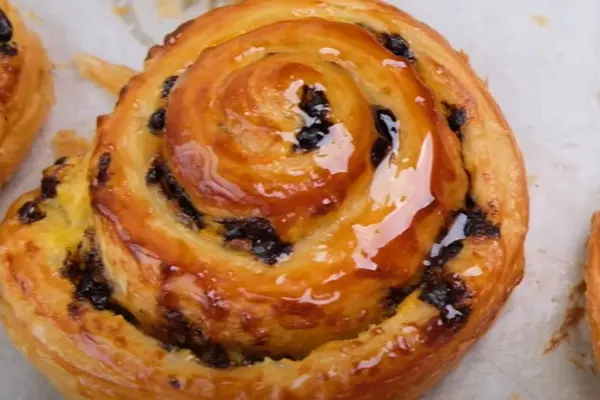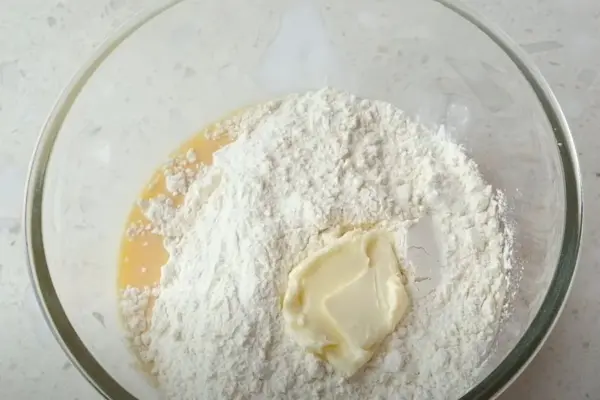Delving into the delightful realm of chocolate Danish reveals not just a treat for the palate but a rich tapestry of culinary artistry and cultural heritage. exploring its key ingredients, varied recipes, and nutritional insights.
Moreover, it delves into the appropriate ways to serve and enjoy this cherished pastry, while answering some of the most commonly asked questions. Whether you’re a novice baker or a seasoned connoisseur,
What is a Chocolate Danish?
The chocolate Danish is more than just a sweet treat; it’s a testament to the creativity and tradition that pervades the world of pastries. Originating from the heart of Europe, thus securing a spot at breakfast tables worldwide.
Description and History
The classic chocolate Danish boasts a flaky, buttery puff pastry filled with decadent chocolate. Historically, despite its name, the Danish did not originate in Denmark but rather in Austria. Danish bakers, who were on strike at the time, adding their unique twist by incorporating rich, luxurious chocolate.
Popularity in Different Cultures
From Copenhagen to Kansas City, the chocolate Danish has found a home. Each region adds its local flair—some enhance it with a dash of cinnamon or a sprinkle of sugar, often enjoyed as a hearty start to the day or a sweet mid-afternoon snack.
This universal appeal makes the chocolate Danish not just a pastry, but a piece of cultural mosaic, adored and adapted by bakers and pastry lovers around the world.
Ingredients and Variations
The art of crafting a perfect chocolate Danish begins with gathering the right ingredients. This section covers the essentials that make up this delightful pastry, as well as the variations that can cater to different dietary preferences or local tastes.
Key Ingredients of a Chocolate Danish
The foundation of any chocolate Danish is its flaky, buttery pastry. This is achieved through a meticulous process involving:
- Flour: Typically, all-purpose or pastry flour is used for a light, airy texture.
- Butter: Essential for achieving the pastry’s laminated layers and rich flavor.
- Yeast: Activates the dough and contributes to its rise and fluffiness.
- Milk: Often used in the dough for added richness.
- Sugar: Adds sweetness to balance the richness of the dough and chocolate.
- Eggs: Used both in the dough and for brushing on top to achieve a golden, glossy finish.
- Chocolate: The star of the show, usually dark or semi-sweet, chopped into chunks or spread as a paste.
Substitutes and Variations
Dietary restrictions or personal preferences might necessitate substitutions or inspire variations:
- Gluten-Free Options: Substitute all-purpose flour with a gluten-free blend to cater to those with gluten sensitivities.
- Vegan Varieties: Use plant-based milk and butter, and swap the traditional filling for a vegan chocolate option.
- Health-Conscious Alternatives: Incorporate a sugar substitute or opt for dark chocolate with a higher cocoa content to reduce sugar intake.
Regional Variations of Chocolate Danish
Exploring the chocolate Danish across different regions unveils unique local adaptations:
- Scandinavian Style: Often includes cardamom in the dough, adding a spicy note that contrasts delightfully with the chocolate.
- North American Twist: Commonly features additional toppings like cream cheese or a drizzle of icing for extra sweetness.
- French Influence: May include a layer of almond cream beneath the chocolate, known as frangipane, enhancing the pastry’s depth of flavor.
Each variation not only reflects local culinary tastes but also invites bakers to experiment with flavors and textures, creating new versions of the classic chocolate Danish. Whether sticking to tradition or venturing into new culinary territories, the possibilities are as limitless as they are delicious.
Step-by-Step Recipe for Chocolate Danish
Creating a chocolate Danish at home can be a rewarding baking project, filled with the aroma of chocolate and butter transforming into something spectacular. This section provides a detailed guide to help you craft this beloved pastry from scratch.
Preparation Method
- Make the Dough: Start by mixing warm milk, sugar, and yeast in a bowl. Allow it to sit until frothy—about 5 to 10 minutes. Add in beaten eggs, salt, and gradually incorporate flour, kneading until you achieve a smooth, elastic dough.
- Incorporate the Butter: Roll out the dough into a large rectangle on a lightly floured surface. Distribute slices of cold butter over two-thirds of the dough. Fold the unbuttered third over the middle third, and then fold the buttered side over the top, enveloping the butter. Rotate the dough 90 degrees and repeat the rolling and folding process several times.
- Chill the Dough: Wrap the folded dough in plastic wrap and chill for at least an hour. This resting period allows the layers to set, which is crucial for achieving the pastry’s characteristic flakiness.
- Add the Chocolate: Once the dough has chilled, roll it out into a rectangle again. Spread a generous layer of chocolate or scatter chocolate chunks along one edge of the dough. Roll the dough tightly from the chocolate edge to the opposite edge.
- Form the Danishes: Cut the rolled dough into segments. For traditional shapes, twist each segment or form them into spirals and place them on a baking sheet lined with parchment paper.
- Proof the Pastries: Cover the shaped pastries loosely with a kitchen towel and let them rise in a warm place until they are puffy and have nearly doubled in size—about 30 to 45 minutes.
- Bake: Brush the tops of the Danishes with a beaten egg for a shiny, golden finish. Bake in a preheated oven at 375°F (190°C) for 20 to 25 minutes, or until they are golden brown and puffed up.
Baking Tips and Tricks
- Temperature Control: Ensure your butter is cold and your oven is correctly preheated. The contrast between the cold butter and hot oven creates steam, which puffs up the layers beautifully.
- Consistency Is Key: Keep the thickness of the dough uniform while rolling to ensure even baking.
- Avoid Overworking the Dough: Handle the dough as little as possible once the butter is incorporated to prevent the layers from merging.
With each layer of buttery dough and rich chocolate, making a chocolate Danish from scratch is as much an art as it is a science. The result is a deliciously complex pastry that’s sure to impress at any gathering or provide a luxurious start to your day.
Health Aspects of Chocolate Danish
While indulging in a chocolate Danish is a delightful treat, understanding its nutritional aspects can help you enjoy it responsibly. This section breaks down the caloric content and nutritional benefits, as well as potential concerns associated with this tasty pastry.
Caloric Content
A typical chocolate Danish contains a significant amount of calories due to its rich ingredients. A single medium-sized Danish can have between 250 to 400 calories, predominantly from fats and carbohydrates. The chocolate filling also contributes sugars, which adds to the calorie count.
Nutritional Benefits and Concerns
Benefits:
- Energy Boost: Thanks to its high carbohydrate content, a chocolate Danish can provide a quick energy boost, making it a popular choice for a hearty breakfast or a mid-morning snack.
- Satiety: The fats from the butter and the protein from the milk and eggs can help in feeling full and satisfied, which can aid in controlling hunger for those who have it as part of a balanced breakfast.
Concerns:
- High in Fats and Sugars: The same ingredients that give the Danish its delicious taste can, if consumed frequently and in large quantities, contribute to weight gain. The pastry is high in saturated fats and added sugars, which are factors in various health issues when not consumed in moderation.
- Low in Essential Nutrients: While tasty, chocolate Danishes do not offer substantial amounts of vitamins or minerals. They are low in fiber and can be quite rich in sodium, especially when made with processed ingredients.
Moderation is Key
Incorporating a chocolate Danish into your diet occasionally won’t derail a healthy eating plan, but moderation is crucial. Pairing it with a source of lean protein or a serving of fruit can also help balance the meal and enhance the overall nutritional profile.
Understanding these nutritional details allows lovers of chocolate Danish to appreciate when and how to best enjoy this pastry as part of a varied and balanced diet. By considering both its indulgent nature and nutritional impact, you can make informed choices that cater to both health and pleasure.




